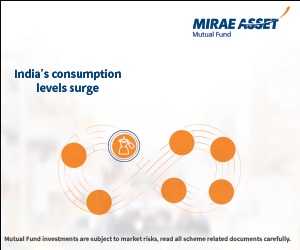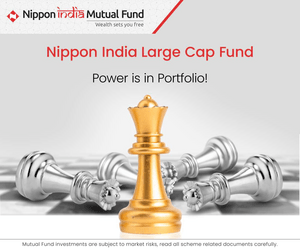Are Mutual Fund Infrastructure Funds suitable for you

Infrastructure is said to be the tangible aspects such as roads, railways, transportation, electricity and so on which are indispensible to the day to day functioning of an economy. The state of the infrastructure is instrumental in determining whether the economy is a developed or developing economy. Mutual Funds that invest in infrastructure sector or its ancillary companies that own manufacture and operate infrastructure assets or infrastructure projects are known as Infrastructure funds.
The companies invested in these sectors could be directly linked to infrastructure such a construction or production of capital goods or indirectly benefit from sectors like banking and metal. According to the Indian Planning Commission, there is no clear definition of infrastructure according to the usage of this term in our country. Most fund managers follow this definition and use their discretion while attributing stocks for the fund. The stocks could either be core infrastructure stocks or also include stocks of ancillary companies.
Therefore, we find that the investment universe is very large for Infrastructure funds and currently these funds are heavily tilted in their investments towards Sectors like, Auto & Auto ancillaries, Banking and Financial Services, Consumer cyclical, Telecom, Constructions and project and Petroleum and Gas.
List of some of the Infrastructure funds and their performance
Have a look at the following list of Infrastructure funds to familiarize yourself with these fund names. Again, this is not a comprehensive list and we selected only some for the knowledge of our readers.

Source: www.valueresearchonline.com as on 29/07/2015
To Check the returns of all the funds under this Category, please click this link https://www.advisorkhoj.com/mutual-funds-research/top-performing-mutual-funds
Performance of Infrastructure Sector Funds over the years
Infrastructure funds shot into prominence a decade ago but are widely known for their volatility. The year 2005 to 2007 was the best period for Infrastructure sector when retail investors started entering into these funds on the basis of its past and then current performance. Year 2007 and 2008 was the period when most of the money came from retail Investors into these funds for the high returns that were already generated. During the good days of 2006 and 2007, the infrastructure funds delivered returns to the extent of 53% and 82% respectively.
This was the period when lots of NFOs, like HDFC infrastructure Fund, L&T Infrastructure Fund, Kotak Infrastructure & Economic Reforms fund, LIC Nomura Infrastructure Fund, Religare Invesco Infrastructure Fund and SBI Infrastructure were launched.
However, following the markets crash in 2008 the Infrastructure funds were highly beaten and generated a negative return of 59% on 2008, lower than the Nifty return of negative 52% in the same year. Recovery of these funds started only in 2009 with recovery of the stock markets and this category delivered almost 80% return on average and beaten the returns of all Equity Funds categories. This performance continued till almost 2010 but soon downfall started and from there on till date the sector is lagging in terms of beating the returns of other Equity categories.
Let us understand this better through the chart below.

Should you invest in Infrastructure Funds
Advisers and experts are of the opinion that investments in infrastructure funds should be avoided and Diversified Mutual Funds could be picked as an investment option as it is very stable in nature. In Infrastructure Funds the short term returns could be on the higher side but in the long run the returns could be adversely affected based on the performance of the sector in which the fund is invested.
A lot of Infrastructure funds have invested in the Banking and Financial Services stocks, which is the most popular sector for investment even by the Diversified Equity Funds. A comparison of Banking and Financial services sector funds shows that this category has given a negative return of -34.05% and -14.1% in the years 2011 and 2013 respectively, pointing that the stocks in these were badly beaten in that period. However, in the year 2014 it has shown remarkable recovery and delivered a positive return of 63%. Hence, the negative returns in the banking and financial services sector is also portrayed along with other sectors in the returns of the infrastructure funds.
Let us examine the following chart to understand the returns delivered by Infrastructure Funds Category versus other popular Equity Categories.

From the above chart you can clearly see that 4 years in a row i.e. in the years 2010, 2011, 2012 and 2013 Infrastructure Funds failed to delivered superior returns in comparison to other equity categories, such as Equity Large Cap, Large & Midcap, Midcap and Small Cap and Multicap. Even Equity Oriented Balanced funds returns were better (excepting 2014 and 2015) and stable compared to Infrastructure category returns. Though we should not compare returns of Balanced Funds with that of Sectoral funds, we did that to help our readers understand that Infrastructure funds are not meant for all investors. Only those with high risk taking ability and patience to wait for a very long period of time in anticipation of getting superior returns from these sectors should invest in these.
For investors with moderate to high risk taking appetite Diversified Equity Funds, large Cap Funds and Mid and Small cap Funds remain the best bet.
Conclusion
Within the asset class of equity Infrastructure Funds are the most volatile of all. It is understood that the fulfillment of your financial goals cannot depend on the vitality of these funds. Investors investing in these funds must keep a hawk eye on the funds and watch the performance closely. It is also in your best investment interest to not have these funds as your core component in your portfolio.
A key reason for the underperformance of this sector is also related to the slowdown in the investment cycle. The current environment of the economy suggest revival and pick up of investment cycle, but we feel, your investments should not be based on these factors and should purely be on the basis of your asset allocation and risk profile.
Moreover, if your risk profile is moderate to high, then why over diversify? If you have invested in Diversified, Large cap and Mid and small Caps, your investments are already pretty diversified and you can relax.
However, if you still like to explore this sector and willing to bet, you are advised to talk to your financial advisor about this and figure out the right time to invest and book profits in these funds. You may not be able to control the volatility but you can control the timing of investment and redemption.
Queries
-
What is the benefit of mutual fund STP
Aug 29, 2019
-
How much to invest to meet target amount of Rs 2 Crores
Aug 26, 2019
-
Can I achieve my financial goals with my current mutual fund investments
Aug 24, 2019
-
Can you tell me return of various indices
Aug 19, 2019
-
What would be the post tax return on different investments
Aug 18, 2019
-
Which Principal Mutual Fund scheme will be suitable for my retirement corpus
Aug 16, 2019
-
What is the minimum holding period for availing NCD interest
Aug 4, 2019
Top Performing Mutual Funds
Recommended Reading
Fund News
-
Edelweiss Mutual Fund launches Edelweiss BSE Internet Economy Index Fund
Apr 25, 2025 by Advisorkhoj Team
-
Bajaj Finserv Mutual Fund launches Bajaj Finserv Nifty 50 Index Fund
Apr 25, 2025 by Advisorkhoj Team
-
SBI Mutual Fund launches SBI Income Plus Arbitrage Active FOF
Apr 23, 2025 by Advisorkhoj Team
-
Motilal Oswal Mutual Fund launches Motilal Oswal Infrastructure Fund
Apr 23, 2025 by Advisorkhoj Team
-
Groww Mutual Fund launches Groww Gilt Fund
Apr 23, 2025 by Advisorkhoj Team













